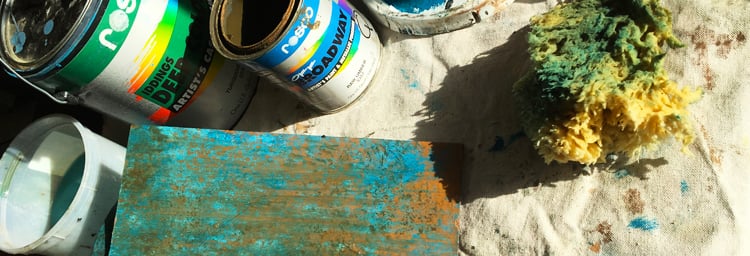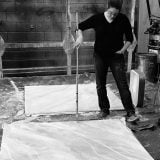Aged metal – it’s a technique we scenic artists create all the time, and each of us has 4-6 recipes in our paint-stained pockets that we’re ready to pull out at any time. But sometimes, the set design lets us make that oxidized metal pretty! Sometimes, we get to create a bronze or copper patina. That’s when you’ll see scenics doing the dance of joy because it means we get to work in the exciting world of color!! It’s still gonna look aged, old and nasty – but it will be a “pretty” aged, old and nasty.
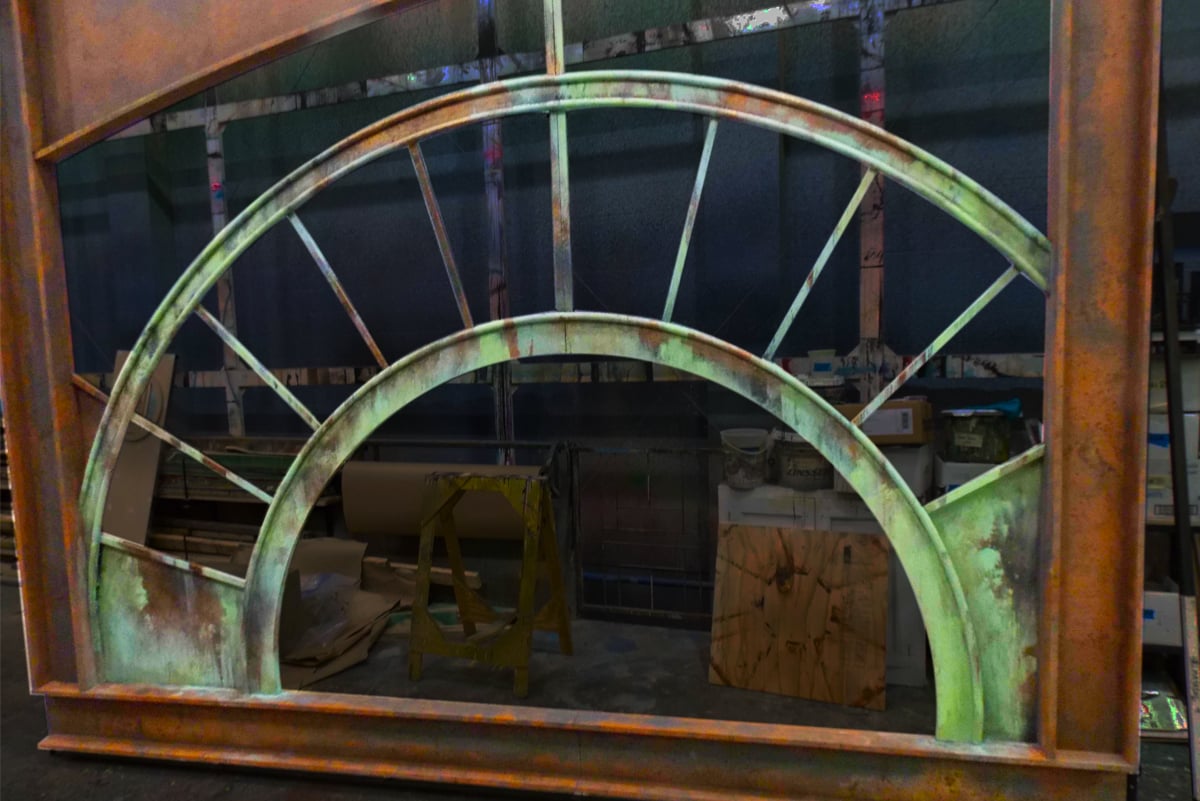 A patinated copper window set for Theatre Latte Da’s Oliver! – Set Design: Rick Poleneck
A patinated copper window set for Theatre Latte Da’s Oliver! – Set Design: Rick Poleneck
As with any scenic technique, choosing the colors to use is often the hardest part. In this case, it’s actually a lot easier than you think. Ask yourself one question, what color do you want your verdigris to be - green or blue? Both are valid choices.
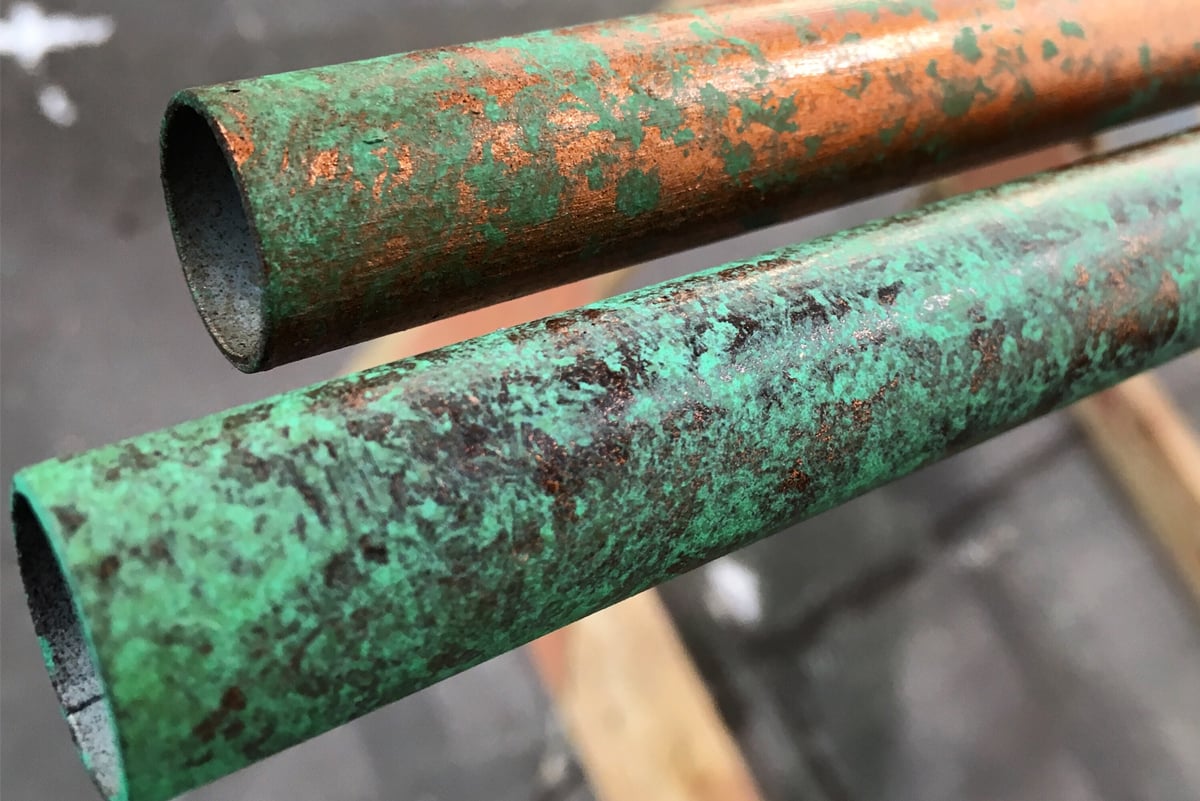
In this case, scenic artist Rachael Claxton needed to create a green patina to age the copper pipes on set. She ended up painting plastic pipes with copper, she then sponged on layers of Off Broadway #5364 Emerald Green mixed with white, and finished the effect off with a light spray of “Glossy Wood Tone” by Design Master to add more ageing to the coloration.

If you decide on the blue verdigris, I recommend Iddings #5570 Turquoise Blue, but I can easily switch to the Super Sat version of the color as well if that is what I have on-hand. Don’t have either? Try mixing your own turquoise hue using equal parts Off Broadway Pthalo Blue, Emerald Green and white – then adjust the tint to taste. Mix your turquoise paint together with white and create yourself a nice range of turquoise shades for application.
Another technique for applying the paint to your patinated scenery: rather than stippling & sponging ON the patina color – try scumbling then sponging the color OFF.
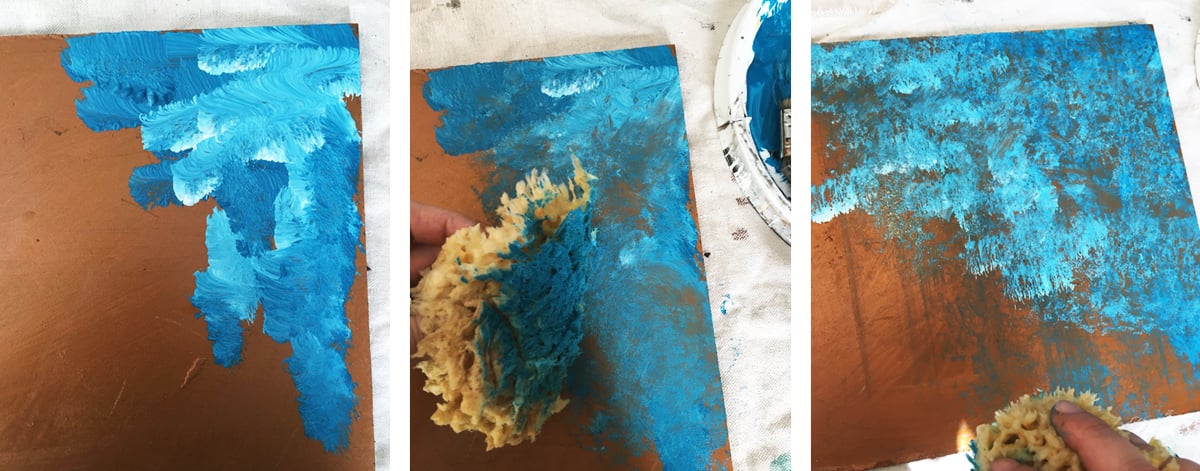
Begin by stippling a blend of lighter & darker shades of turquoise on top of a copper or bronze base color. Then, while the turquoise paint is still wet, use a slightly damp sponge to sponge off the areas of color where you want your base metallic color to show through. Continue to add/remove paint where it’s needed and finish the effect off with a quick dry brush action with the sponge to create a drip effect. What you'll have in the end is a great balance of patina colors mixed with areas where the base copper or bronze pokes back through.
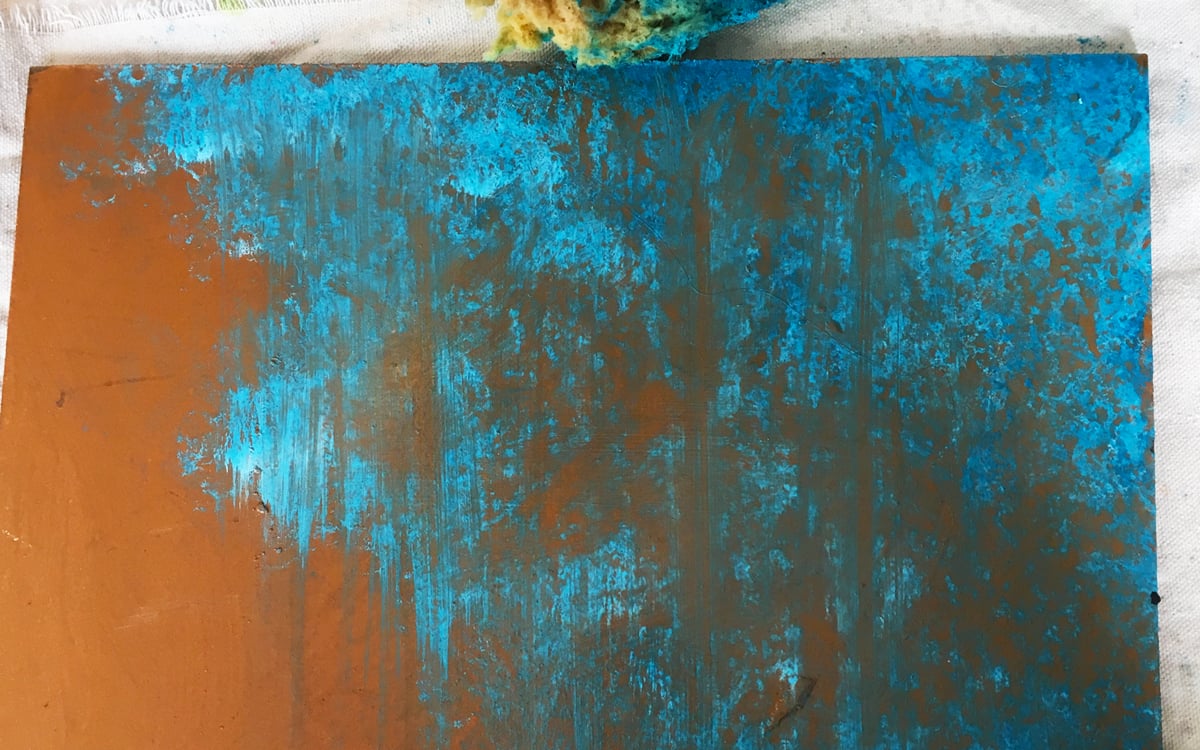
The best patina effects happen when you have three-dimensional scenery to work with, such as statues, fountains or small accent elements. Then, it actually gets easier! Scumble on the patina color-blends, making sure to get the paint into all of the nooks, crannies, and corners. Then, carefully use a rag to gently rub all the paint from the “high” areas – letting the paint stay in the “valleys.” If you rub off too much, it’s always easy to lightly stipple more paint back on.
If your patina results are looking too bright and happy, you can add a layer of every scenic’s best friend, Off Broadway #5357 Raw Umber. Mix it 50/50 with water and glaze it over your turquoise verdigris. Not only will this tone down the brightness of the color and add an extra layer of dirt and age to the effect, but it will also shift the hue towards a green shade for that much more variety in the tone.
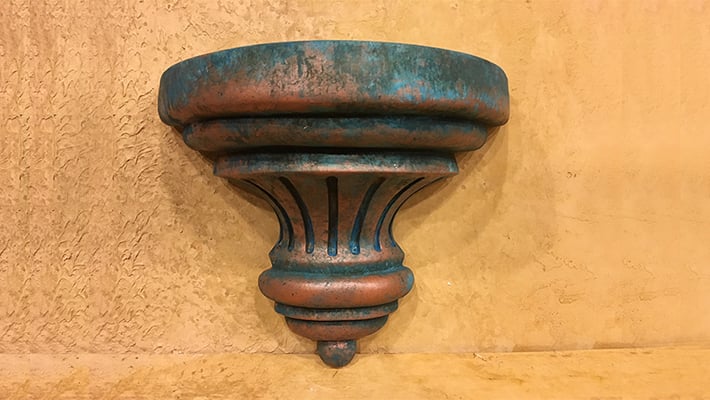
That, my friends, is faux patina in a nutshell. Choose Emerald Green or Turquoise Blue as your verdigris color and tint with white to create a variety of shades. Apply those patina-shades to your copper or bronze base-colored scenery and texture/tint to taste. To learn more about the paint products mentioned in this article, visit Rosco’s Scenic Paint page on their website.

